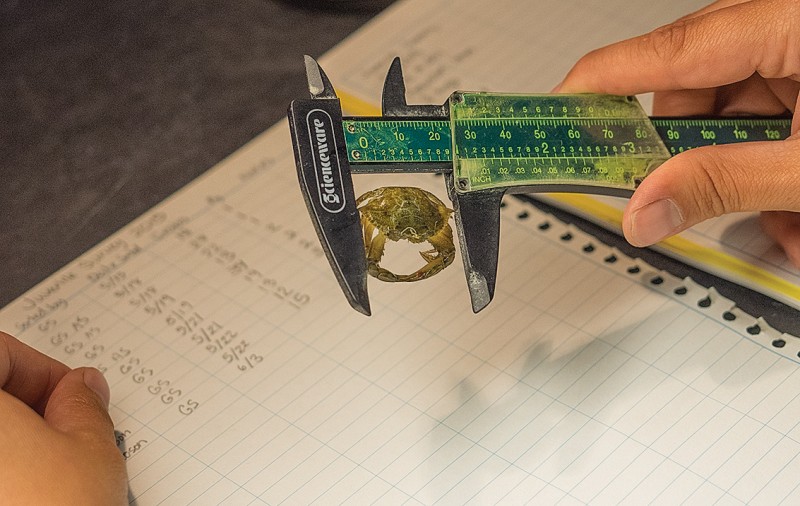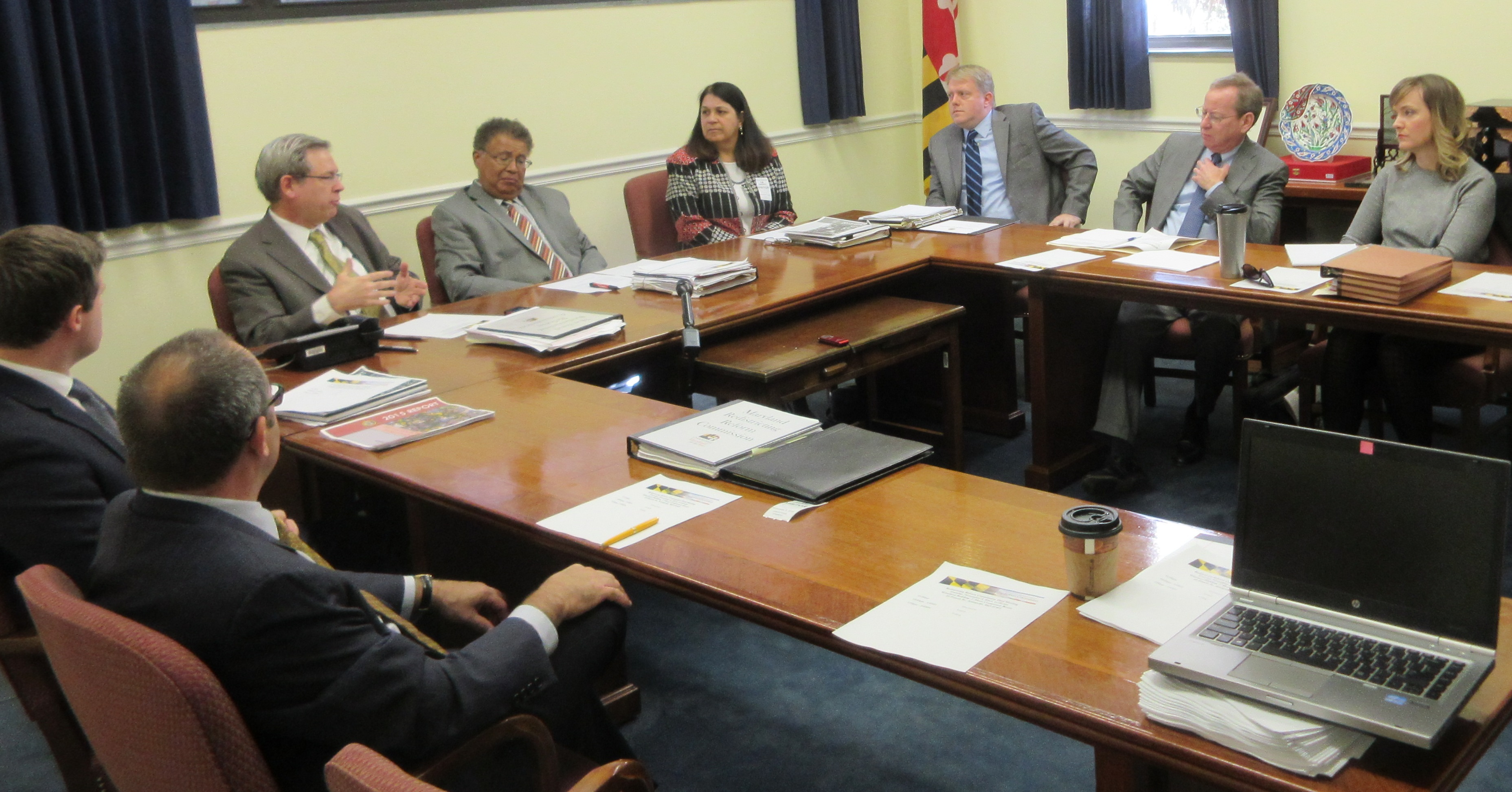By Rona Kobell
Bay Journal
Chesapeake Bay crabbers will likely face some harvest restriction this season to protect future generations of the iconic crustacean, a move managers say is necessary because of the low population of young crabs.
Fishery managers for Maryland, Virginia and the Potomac River Fisheries Commission all say they are considering shortening the season and imposing stricter limits on the harvest of female crabs. They are not proposing changes in male crab catches.
News of harvest cuts surprised some crabbers at Maryland’s Blue Crab Industry Advisory Committee last week. The latest winter dredge survey results released in April showed the highest number of female crabs in the 28-year history of the annual count. Female crabs clocked in at 254 million, a 31% increase over last year.
But the Baywide survey, which counts the crabs in more than 1,000 locations as they burrow in the mud, estimated there were 125 million juvenile crabs in the Chesapeake, a 54% decrease from the 271 million found in 2016. That is the lowest tally since 2013 — a year when crabbers also had their catch curtailed — and one of the five lowest estimates since 1990, managers said.
Robust first half, restrictions later
As a result, managers are expecting a robust harvest for the first half of this year, fueled by the large number of adults now in the Bay. But catches of the Chesapeake’s most valuable seafood will need to be curtailed later in the year to protect the smaller number of juvenile crabs as they reach market size.
Maryland and Virginia are both expected to decide by the end of June on harvest restrictions, which will take effect for the remainder of the 2017 season. The Potomac River commission will discuss its plan at its June 1 meeting, executive secretary Martin Gary said.
Maryland crabbers had expected status quo, at least, and possibly some easing of catch limits based on news reports quoting a Department of Natural Resources press release saying the survey had found the Bay’s crab population “resilient and steady,” with a record number of spawning females. They came to the meeting last week hoping to maintain last year’s longer season and perhaps even secure more concessions. Last year’s survey results were so good that both Maryland and Virginia extended the season for about three weeks.
Instead, Mike Luisi, assistant director of fisheries and boating services with the Maryland DNR, talked about a return to 2013, when the season closed on Nov. 10. Last year, the season extended to Nov. 30.
“We had 54 percent less juveniles this year than last year. To come into here thinking that we’re going to have status quo is unrealistic,” he said.
As with this year’s survey, the 2013 crab canvass showed a robust population of females and low abundance of juveniles, which are 2.4 inches across or smaller yet can be expected to grow to market size by next year. Maryland responded in 2013 by tightening bushel limits and shortening the season, aiming to cut the harvest 20– 40%. The move worked, Luisi said, as the population rebounded enough to relax the limits and extend the season for 2015.
If the department were to follow 2013’s lead, the season would close Nov. 10 and many crabbers, depending on the type of license they hold, would take between three and seven bushels less; some would take no decrease at all. Daily catch limits vary over the season, but last September, for example, they ranged from 19 bushels for a crabber fishing 300 pots to 35 bushels for a crabber with up to 900 pots.
The 2013 cuts show what works for a sustainable fishery, Luisi said. But he and Fisheries Director Dave Blazer told the crabbers they were open to other suggestions, such as an even earlier season closure paired with a smaller reduction in the daily bushel limits.
Crabby scientists
But not every crab scientist approves of how management has reacted to the year-over-year changes in the notoriously boom-and-bust blue crab species. Tom Miller, a crab specialist who directs the Chesapeake Biological Laboratory at the University of Maryland Center for Environmental Science, said it’s hard to evaluate the population’s long-term stability and the harvest it can withstand if management reacts seasonally.
Crabs live between one and three years and can reproduce furiously, or not much at all. After being spawned near the mouth of the Bay, their offspring hitch a ride on ocean currents back into the Chesapeake. Some years, many return; some years, many don’t.
“I am not convinced that we need to change management,” Miller said. “One of my concerns has been that managers have been too responsive to individual winter dredge survey results. The reference points are meant to be long-term responses of the crab population under constant conditions — and as a result, frequent changes to the management regime makes evaluation of this problematical.”
Robert T. Brown, president of the Maryland Watermen’s Association, didn’t like the choices facing watermen at the meeting: “You either shoot yourself in the head, or you shoot yourself in the foot.”
Watermen expected better news
George O’Donnell, DNR’s liaison to the watermen’s community, said he’d been traveling around the state warning that a cut was coming. But Brown and most of the watermen were expecting better news.
“Everybody came here tonight thinking we would get an increase. There’s more crabs than we’ve seen in years,” said Thomas “Bubby” Powley, a Dorchester County trotliner. “They’re telling me they’re not there? The proof is in the pudding,” he said, holding up a cell phone photo of small crabs he’d caught and had to throw back.
Added his brother, Larry “Boo” Powley: “The boys are coming in with their limit at 10:30, 11 a.m.”
Despite the managers’ admonition that harvest restrictions are needed to sustain the crab population, the Powleys also asked Luisi and Blazer to let watermen in their part of the Bay catch more 5-inch male crabs.
Under rules in effect since 2001, the smallest crab that can be caught legally increases in mid-July from 5 inches across to 5.25 inches. The midseason increase was set to give male crabs more time in the water to mate with females and enhance reproduction.
Miller, the UM crab scientist, has said that seemingly small annual change in catch regulations helps sustain the Bay’s crab population.
Disputes over size, schedules, methods
Some Dorchester County watermen, including the Powleys, began pushing two years ago to delay the increase in minimum catchable size. They sell those smaller crabs to picking houses, and complained the crustaceans in their part of the Bay don’t grow to the larger sizes that Baltimore and Southern Maryland crabbers see.
The department has resisted, and Luisi again told the group that such a change was not realistic, as the winter survey found male crabs had decreased 16% since last year and are only about half the abundance that scientists observed in the early 1990s.
The fight over the 5-inch crab apparently cost DNR’s crab manager, Brenda Davis, her job after 28 years with the department. Davis did not make the decision against relaxing the minimum catchable size; she merely delivered it. But several watermen met with Gov. Larry Hogan Jr. and his deputy chief of staff, Jeannie Haddaway-Riccio, to complain about the catch restriction and accused Davis of not being flexible enough about the rule.
The Hogan administration fired her shortly after the meeting and has refused since to give a reason, saying it is a personnel matter.
The Maryland DNR will decide what, if any, changes to make in crabbing regulations in consultation with its Tidal Fisheries Advisory Commission. No meeting date has been set. Once the department decides, it will put out a notice for the change, to take effect 48 hours later.
Virginia’s crab management advisory board is scheduled to discuss its options May 17, with the Virginia Marine Resources Commission likely to make a decision at its June 27 meeting. Commissioner John M.R. Bull said he expected to take some action, and that repeating last year’s late closing on Dec. 15 and this year’s early opening on March 1 would not be possible, given the drop in juvenile numbers.
“This year’s babies are next year’s mamas,” he said. “We want less of them to be harvested in the fall, so they will be able to be next year’s mamas. There was a warning sign and a blinking light that went on with the juvenile numbers; that means we have to be cautious in how we handle the spring fishery. I’m not exactly sure what it will be, but we need to do the right thing in light of the low levels of juveniles for the health of this fishery.”
One option that is not likely to pass muster at the commission is the reopening of the winter dredge fishery, where crabbers take pregnant females who are burrowed in the mud. Virginia closed the fishery in 2008 after that year’s winter survey found the crab population had hit a historic low.
Every year since, crabbers have lobbied to reopen the winter dredge fishery to provide a winter income and allocate the pain of cuts fairly among all crabbing sectors. But the commission has declined. The reopening is on the agenda again for the commission’s June meeting, but Bull said the low juvenile numbers “seem to preclude the re-opening” of that fishery.






Recent Comments